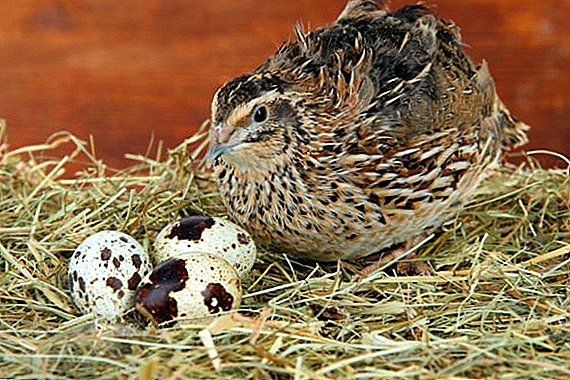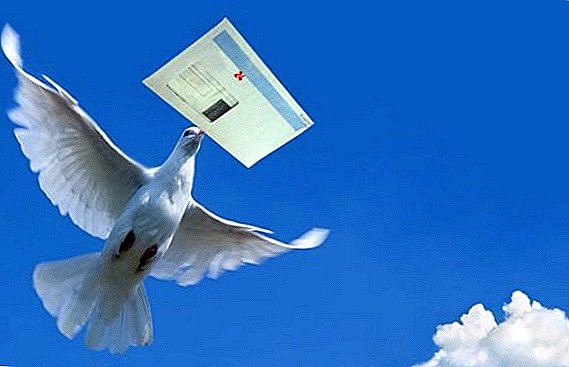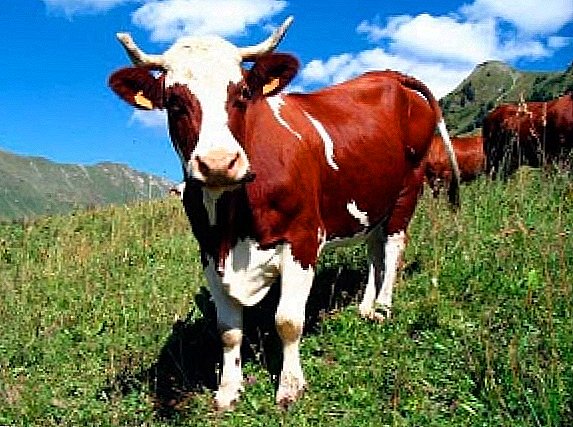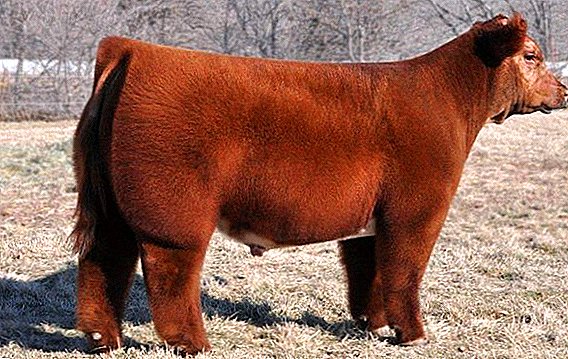 Most of the farmers involved in cattle breeding raise cows in order to produce milk, meat and skin. However, there are several very special types of cows, the benefits of growing which are directed in a fundamentally different direction. One of these types of cattle is the American plush cow.
Most of the farmers involved in cattle breeding raise cows in order to produce milk, meat and skin. However, there are several very special types of cows, the benefits of growing which are directed in a fundamentally different direction. One of these types of cattle is the American plush cow.
In this article you will find all the necessary information about these animals, as well as the main nuances of caring for their hair and the principles of drawing up a diet for them.
History of origin
A feature of the American plush breed is that their long, fluffy coat covers their whole body, including their legs and tail, without exception.
Did you know? Official livestock organizations deny recognition to plush cows because they do not consider them to be a separate breed of animals, claiming that they are just a mixture of other breeds.
The "father" of these animals can rightly be called Matt Lottner, an Iowa resident who has been breeding and improving this breed of cows for more than twenty years. The first serious success of his brainchild Lottner provoked on his own in early 2011, when the first photos of his charges were posted on the Internet.  And in 2013, his bull, nicknamed the Texas Tornado, took first place at the annual exhibition of cattle.
And in 2013, his bull, nicknamed the Texas Tornado, took first place at the annual exhibition of cattle.
Increased interest in relation to animals with such unusual in their external parameters forced Lottner to completely abandon the breeding of meat and dairy breeds of cows and switch to the breeding of exclusively plush breed.
Cows include Simmental, Bestuzhev, Caucasian Brown, Sychev, Schwyz, Yakut, Krasnogorbatov meat and dairy breeds.
Many of the critics of this breed argue that such an appearance is given to animals by exceptionally special procedures for grooming, styling and washing wool. 
Appearance and physique
American plush cows have the following appearance features:
- coat color varies very widely, you can meet black, brown, cream, piebald, and white, bay, light gray and spotted representatives. The main interest, of course, is the texture of the wool of these animals. To the touch, as the name suggests, it resembles plush, a soft, pleasant to the touch, which causes the desire to iron it and press it to the whole body against it;
Did you know? The plush cow is the only breed of animals in the world that has its official brand of soft toys.
- head this breed of cow differs in rather small sizes;
- eyes, ears and nose symmetrically located and proportional to the size of the head;
- one of the distinguishing features of this breed is almost complete lack of horns (they can only be felt under the coat, visually they are not visible);
- torso It has a rectangular shape, rather wide with round, voluminous sides. Nape head goes into a straight back, the back of which slightly rises up. Tail - long enough, has a fluffy tassel at the end;
- a large amount of wool on the legs makes them look like some kind of columns, but at the same time they are not without some visual grace;
- These animals are characterized by rather small sizes (height at the withers rarely exceeds 135 cm), which nevertheless does not prevent them from having a rather large weight: the mass of bulls is about 800 kg, and calves - up to 550 kg.

Where can I buy and how much does it cost
Due to the relatively recent breeding date of this breed and the difficulty of inter-mainland communication in matters of livestock transportation, there is no possibility to buy such an animal on the territory of the post-Soviet space.
Nevertheless, the rancher owner from Iowa gladly sells his wards to all corners of the globe, it is only necessary to be able to contact him and provide transportation to the cows.
The price for a standard representative of the male breed is about 5 thousand dollars. Females will cost a little more, they will have to pay about 7-8 thousand dollars. Add here the need for registration of a veterinary passport, the cost of transportation and customs duties.
In total, the amount will vary from 8 to 11 thousand US dollars.
The main purpose of their breeding is primarily to obtain aesthetic pleasure. Meat of such animals, of course, can be eaten, and it even has quite good organoleptic characteristics. However, such a high price for these pets does not allow to consider them as meat and dairy breed.
Most of them are bred for the purpose of participating in various exhibitions and competitions. 
Hair Care and Feeding Diet
Care of wool, as already mentioned, is one of the main secrets of the striking appearance of these bulls and calves. Every day, their wool must be subjected to special procedures, including washing, combing, drying and styling.
All faded, lost velvety and matted wool must be removed in a timely manner, so that it does not negatively affect nearby areas of hair.
Important! One of the main secrets of the plush characteristics of the wool of these cows is wrap with neoprene.
Before each exhibition or competition, wool is additionally added with special brushes and processed with various oils and fat masses, which gives it extra volume and shine.
Young individuals traditionally receive the greatest popularity among exhibition jury, since it is their wool that most often has the most impressive optical and tactile indicators.  Food features are as follows:
Food features are as follows:
- It is recommended to feed on these animals according to the usual regime for their tribesmen. The most suitable feeding mode is pasture. The volume of pasture needed by one individual for normal existence is about 5-7 square kilometers.
- In the winter period, it is recommended to feed mainly juicy feeds, such as hay, straw, beets, carrots, cabbage, etc.
- To prevent the emergence of various diseases, especially in winter, associated with a deficiency of macronutrients in the body of cows, it is recommended to constantly give them apples, pears, quinces, plums, etc.
- In winter, it is especially important to provide pets with round-the-clock access to feed, so try to place voluminous troughs in front of the pens that would contain a lot of food.
- In the summer, you need to carefully monitor the watering of plush cows, always provide them with the opportunity to drink fresh water from a cool source.
Important! In winter, small portions of small stones must be added to the feed trough - this is necessary to improve the digestive processes.
Is it possible to milk
The udder of these cows is purely anatomically poorly designed for milking, because it is too close to the legs and very weakly expressed. Cows do not tolerate milking, they may kick, try to strike you and show other signs of anxiety.
In addition to the anatomical features of these animals already mentioned, this is also associated with the unlearning of many generations of this breed of cows in milking.  In general, the fact that you will milk your plush cow, it will not become worse. The main thing - to pre-teach it to the process. In addition, it is worth remembering that in the process of milking they give an order of magnitude less (only 1-1.5 liters) of milk than meat and dairy breeds.
In general, the fact that you will milk your plush cow, it will not become worse. The main thing - to pre-teach it to the process. In addition, it is worth remembering that in the process of milking they give an order of magnitude less (only 1-1.5 liters) of milk than meat and dairy breeds.
Keep in mind that plush cows are not allowed to be milked while nursing offspring, since their small udder is not able to provide the proper amount of milk and calf, and you.
Remember that only anxious and attentive attitude to your pets, the satisfaction of all their needs will lead to the formation of conditions that guarantee you the greatest economic benefits. Hurry up to become one of the first owners of such an unusual breed of cows in the CIS.












